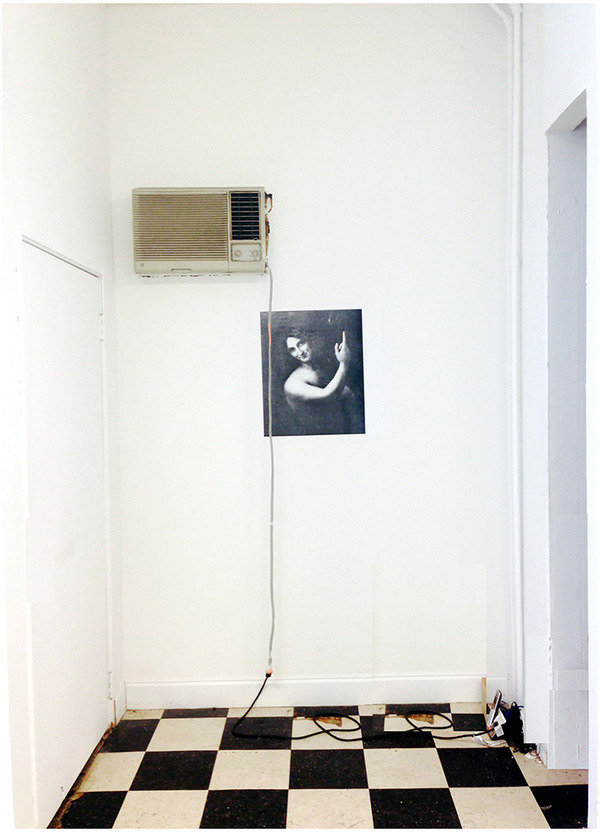Jean-Baptiste Bernadet!
dal 26/9/2014 al 8/11/2014
Segnalato da
26/9/2014
Jean-Baptiste Bernadet!
Retrospective, New York
Studies for Sunsets! The artist features a series of canvases that, together, suggest an extended meditation on the time-honored art historical motif of the sunset. Also on show a solo exhibition of Haley Mellin.

The series originated in Bernadet's idea to paint from the example of Our Banner in the Sky (1861), a work by Hudson River School painter Frederic Edwin Church, who lived three miles from Hudson, NY. Sensing the success of this experiment, Bernadet decided to put the idea through its paces with a series of canvases that, together, suggest an extended meditation on the time-honored art historical motif of the sunset, each rendered through the compositional lens of the American flag.
Every painting contains a striated field that opens up towards the upper two thirds or so of the left hand side of the painting, in such a way that it roughly resembles an American flag. In some works the connection is more direct, as in those that mime the flag's colors most closely, though never exactly. While in others the relationship is more tenuous, and perhaps ultimately established only by that painting's inclusion alongside others in the series. Some of the darker, more minimal works are like this, their correspondence to the flag form only becoming visible when placed alongside their brighter, sunnier peers. Further, Bernadet has explored a range of ways of executing this motif, and it is here that the "sunset" element can be found. For, as much as each canvas is felt to be a painting of a generalized flag form, so too do they seem to be cloudy skies bearing witness to particular meteorological events, and occupying that liminal temporality unique to the turn from day to night. This is felt most strongly in the muddied, almost watercolor effects of some of the works, where it is as if rain is clouding our vision, as well as through Bernadet's color palette, the expected red, blue, and whites of the majority of them shot through with crepuscular golds and pinks, and matched by a smaller group of nearly nocturnal works executed in greys, navy blues, and blacks.
The flag and the sunset: in the incessantly flowing, morphing, and convulsing sea of images we encounter on a daily basis as citizens of the 21st Century, these are two of the most conventional and familiar. The former a ubiquitous reminder of the nation state, its histories and mythologies, and all that these might mean to us and others, positively, negatively, and everything in-between, while the latter was once an example of the sublime, ineffable aspects of nature and the passing of time. Yet it has now become a banal sign of travel, leisure, and associated notions of escapist pleasure that have always consistently found their way into ad copy, and now our social media feeds, yet without retaining any of their former sense of duration, change, or liminality, frozen as they typically are into a suggestion of eternal youth and beauty.
The changing signification of both flags and sunsets over the past hundred and fifty or so years has always been the inverse of one another in terms of symbolic weight. This is to say, as the nationalist and imperial ambitions of the United States have grown over the past century, leading to war and unrest, the formerly neutral sign of the flag has undergone alterations in its symbolism. So too has the sunset lost its vaunted sublimity by becoming ubiquitous through circulation and use, and thus a functional, but weak signifier. Close examination of one of Bernadet's paintings reveals that he has not so much fused together sky and flag motifs, but has rather conjured both such that they are held in tension, slipping in and out, over and under one another. Each painting makes reference to both history and our present moment, and in doing so activates this significatory instability. For, if in a global, networked society systems have become dispersed, into the atmosphere as it were, wherein our own devices, public spaces, modes of travel, etc. all become means of surveillance and control, of our bodies and actions, as well as of our access to information, and thus to agency, then it makes sense to address this "ether" surrounding us. Further, since, due to their vastness, it is not possible to represent those systems or their omnipresence, then pictorial strategies of abstraction, such as Bernadet's, gain new significance as a means by which to address the structurally abstract relations between other people, objects, these larger systems, and ourselves. This is not to say that these are necessarily the subject matter of these paintings, but rather that they are the context that gives that sunset and flag imagery their significance, and which animates their resolute formalism.
Alex Bacon
The exhibition will be accompanied by a catalogue, Studies for Sunsets, published by Karma and available in October. It will include illustrations of the works in the show and an essay by Alex Bacon. The show will run concurrently with an exhibition of new works by Haley Mellin at 727 Warren St.
Opening Reception Saturday, September 27, 6–8pm
Retrospective
727 Warren St., Hudson, NY
Hours: Saturday and Sunday noon–6pm



